Cary Orthopaedics originally wrote and published this article in 2017 and has updated it with the latest research and information.
Ben Franklin was right when he said: “An ounce of prevention is worth a pound of cure.” We agree! Our orthopaedic specialists encourage patients to adopt dietary and exercise habits that reduce joint pain and support strong, stable joints.
Importance of bone health
Strong and healthy bones are important to your overall well-being and quality of life. Bones provide the framework for our bodies, support movement, protect vital organs and anchor our muscles.
Childhood and adolescence are critical periods for bone development. Bones accumulate most of their density during these stages. In adulthood, maintaining this density through balanced nutrition and weight-bearing exercises is essential.
For older people, the importance of bone health becomes even more pronounced. Osteoporosis can be a major concern because it makes bones susceptible to fractures even after a minor fall.
Building solid bones starts with making the right dietary choices. Choose foods that build bone density, strengthen connective tissue and reduce inflammation. This will help prevent injuries and preserve your joints for a long, active life.
Here are some foods to include in your diet to promote strong bones and prevent orthopaedic conditions like osteoporosis.
1. Calcium-rich dairy
Calcium is a fundamental mineral for boosting bone health because it provides the foundation of bones and teeth. Dairy products like milk, yogurt and cheese are classic sources of calcium. They also contain vitamin B12, which is key in building bone mass.
If you are lactose intolerant or vegan, try fortified plant-based milk alternatives like almond, soy or oat. You will still get your nutrients without compromising your needs.
Calcium-rich foods such as tofu, almonds, and leafy vegetables are good sources of this essential nutrient. Adding these foods into your diet ensures you get the calcium your bones need without regular dairy.
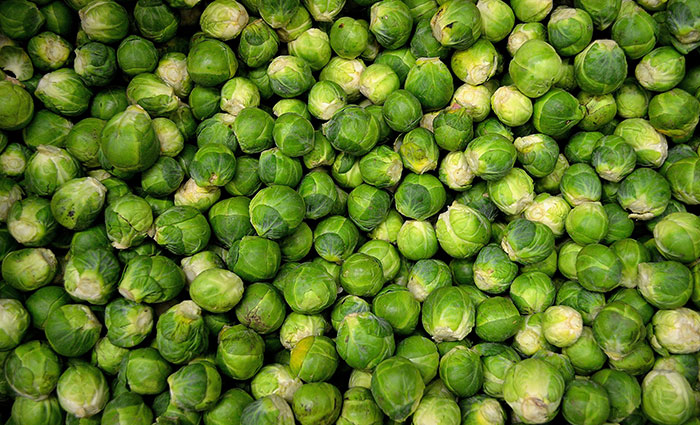
2. Green and leafy vegetables
Eat dark leafy greens like kale, spinach, collard greens and turnip greens. They are excellent sources of calcium, vitamin K and magnesium, all of which increase bone mineral density. Several other popular (and tasty!) vegetables make the list, including broccoli, cauliflower and Brussels sprouts.
Green and leafy vegetables can block an enzyme that causes joint swelling. Plus, they’re chocked full of fiber, vitamins and nutrients for overall health and well-being.
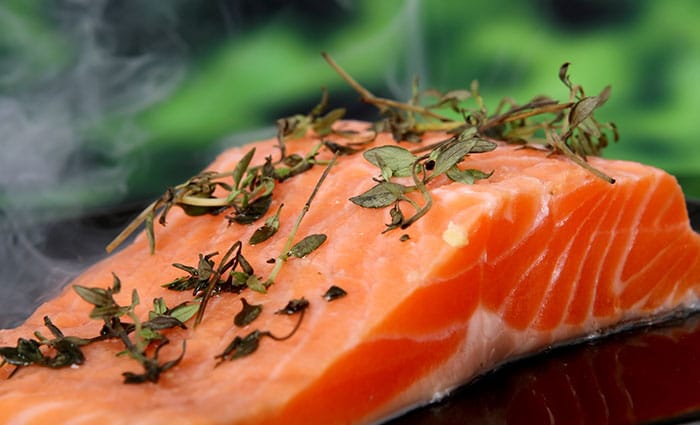
3. Fatty fish and fish oils
Fatty fishes like salmon, mackerel and sardines are foods rich in vitamin D and omega-3 fatty acids. Vitamin D is crucial for calcium absorption in the intestines and is vital in maintaining bone density. Omega-3 fatty acids found in fish oils have anti-inflammatory properties. This benefits bone health by reducing the risk of bone loss and fractures.
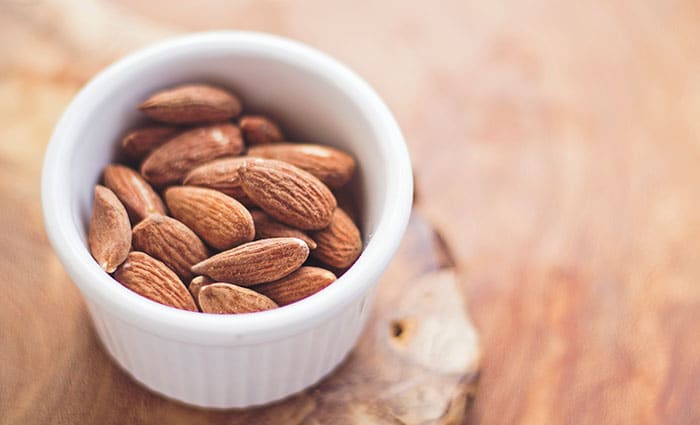
4. Nuts and seeds
Almonds, chia seeds and flaxseeds are excellent sources of calcium, magnesium and phosphorus – all essential for bone health.
They also provide healthy fats that support overall health and help in nutrient absorption. A good alternative to nuts or seeds is a spoonful of almond butter.
5. Lean protein
Protein is a building block for bones, muscles and other tissues, and it aids in calcium absorption. Include lean protein sources in your diet. Lean red meats, poultry, beans, lentils and tofu can contribute to bone health.

6. Fruits and berries
Vitamin C boosts your immune system and plays a role in collagen production, which is an important factor in bone tissue. Research has shown that vitamin C can help prevent osteoporosis. Many fruits are packed with vitamins and minerals, including citrus, melons, kiwis, pineapples and berries.
We’re particularly partial to blueberries, which are high in anthocyanins – one of the most powerful flavonoids. These help “turn off” inflammatory responses in the body. Apples are another fiber-rich, anti-inflammatory fruit that delivers added benefits for gut health.
7. Eggs
Eggs are a great source of protein and vitamin D. We need vitamin D to help with calcium absorption.
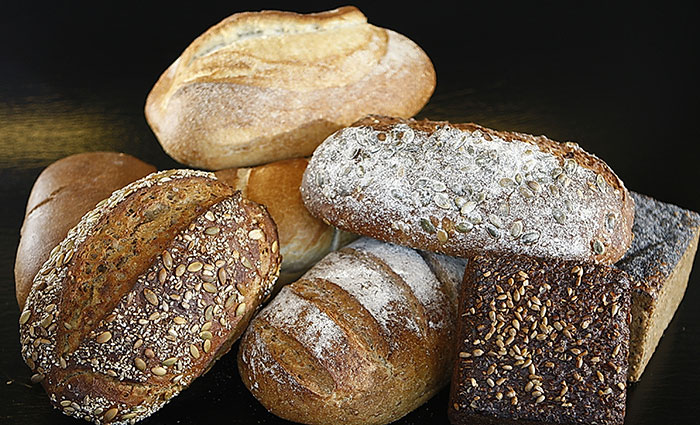
8. Whole grains
Proteins found in refined grains – such as white bread, white rice and regular pasta – may trigger an inflammatory response in the body. However, high-fiber whole grains help produce fatty acids that help fight inflammation. Therefore, stick with whole grains.
The whole grains in brown rice, quinoa and whole wheat bread contain phosphorus. This mineral works alongside calcium to build strong bones and reduce joint pain.
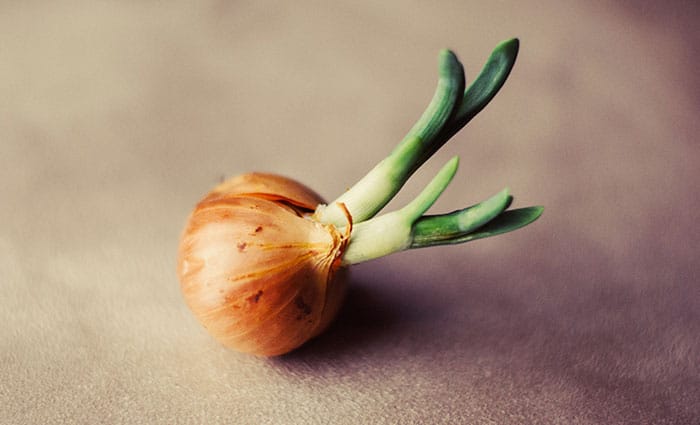
9. Herbs and spices
Certain herbs and spices, like garlic, turmeric, ginger and oregano, have potential anti-inflammatory and bone-strengthening properties. Use herbs and spices without added salt, as too much can increase your risk of osteoporosis.

10. Fortified foods
In most grocery stores, you can find a variety of foods fortified with bone-supporting nutrients like calcium and vitamin D.
Fortified orange juice and cereals can help you meet your daily intake recommendations if you have dietary restrictions.

11. Olive oil
Toss out your vegetable oil, sunflower oil and peanut oil – all of which can increase inflammation. Instead, use a few tablespoons of olive oil for cooking and salad dressings. Better yet, go with the extra virgin variety that is less processed.
Olive oil is an unsaturated “healthy” fat often associated with a Mediterranean diet. It’s another source of Omega-3 and a heart-healthy choice!
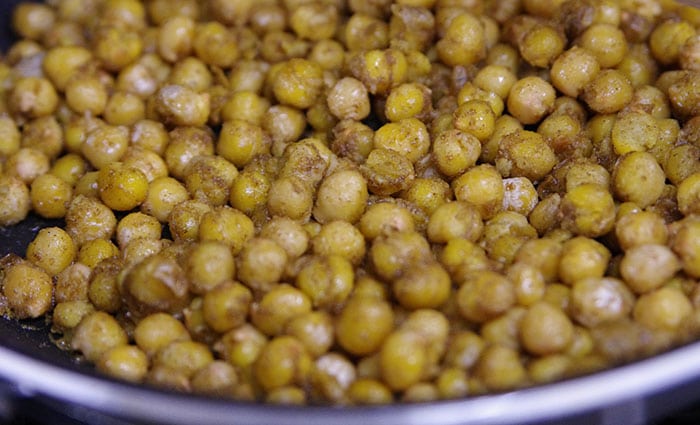
12. Lentils and beans
Beans and lentils are known for their health benefits. They’re an excellent source of protein, fiber and essential minerals. They also have antioxidant and anti-inflammatory properties. Black beans, lentils, chickpeas, pinto beans and soybeans are all great sources of anthocyanins – that magical flavonoid that reduces chronic inflammation.
13. Bone broth
Glucosamine, chondroitin and amino acids are well-documented to help maintain healthy joints, while calcium is essential for bone density. Bone broth contains all of these. The gelatin-like substance that comes from cooking bones mimics collagen that occurs naturally in our joints, tendons and ligaments.
Whether or not bone broth can actually stimulate the regrowth of cartilage is a fiercely debated topic in the medical field. But taken regularly as an oral supplement, it has been known to reduce joint pain and increase function for people with arthritis.
Bone broth can be used as a hot broth or as a cooking base or sauce in recipes. Get tips on bone broth preparation from these dietitians.

14. Dark chocolate
Now we’re talking! Indeed, chocolate is part of an anti-inflammatory diet. Cocoa, the main ingredient in chocolate, contains antioxidants that can counteract genetic predisposition to insulin resistance and inflammation. The higher the percentage of cocoa in the chocolate, the higher its anti-inflammatory effect.
But remember, chocolate can be high in sugar and fat, so enjoy it in moderation. If you’re going to indulge, choose chocolate that is at least 70% cocoa.
Foods to avoid
So there you have it – our 14 recommended foods to reduce joint pain and build strong bones. Of course, there are some DON’Ts when it comes to eating for joint health. Pay careful attention to the effects of foods that can be linked to inflammation:
- Limit refined grains like pasta, rice and white bread.
- Keep salt to a minimum. Salt causes fluid retention, which is associated with tissue swelling. Additionally, the Arthritis Foundation reports that limiting salt intake can reduce calcium loss, thereby reducing osteoporosis and fracture risk.
- Steer clear of processed foods whenever possible.
Stay tuned to our blog for more prevention tips from Cary Orthopaedics, a top orthopaedic practice in the Triangle.
Our orthopaedic doctors can help you reduce joint pain
You need proper nourishment with a well-balanced, nutritious diet to maintain strong and healthy bones. Your bones are a living tissue that requires the right nutrients to stay resilient throughout your life.
Despite well-intended prevention efforts, sports injuries and chronic joint pain can occur. If you find yourself in need of orthopaedic expertise, we’re here to help.
Cary Orthopaedics provides comprehensive orthopaedic care. We have specialists for the treatment of all joints, as well as doctors who focus on joint replacements and spine care. We also offer the latest methods of physical therapy and acupuncture. Make an appointment today!
With locations in Cary, Morrisville and Holly Springs, we serve patients throughout the Triangle.









